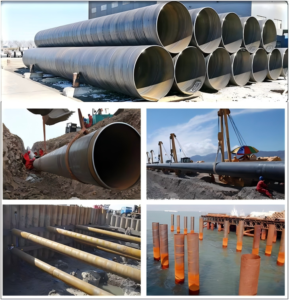
ASTM A252 Grade 3 Steel Pipe: Key Applications and Benefits
In the realm of deep foundation engineering, the choice of piling material can determine the longevity and safety of an entire project. ASTM A252 Grade
Standard:ASTM A53,ASME SA53
Grade: Grades A and B
Size: 1/2″ to 24″, or custom
Schedule: SCH10, SCH 40, SCH 80, XS,SCH 160 To SCH XXS
Type: Seamless , Welded (ERW), Galvanized steel pipe
Ends: Plain, Beveled, Threaded
Coating: 3PE, FBE, Varnished, Black, Zinc Coated
As we know, ASTM A53 steel pipe is always required with large quantities from different industries, so what is A53 pipe ?
ASTM A53 steel pipe is the most commonly used grade in the ASTM A53 standard. And it includes three types in pipeline systems:
a. Seamless pipe type
b. Welded pipe type (ERW, EFW, HFW, SAW)
c. Hot Dipped Galvanized pipe type
ASTM A53 is the standard specification for the carbon steel pipe in seamless, welded, and zinc-coated galvanized pipes. Covers the dimensions ranges from OD 10.3 mm (1/8 inch) to 660 mm (26 inch).
Find here Differences between ASTM A53 and ASTM A106.
a. Seamless Type S, has grade A and B.
b. Welded Type E (ERW), Grade A and B.
c. Furnace Welded Type F, Grade A only.
ASTM A53 standard specification including hot dipped galvanized (zinc coated) requirements for ASTM A53 Grade B steel pipe.
Moreover, there are pipe internal and external galvanization. By the hot dip procedures, zinc thickness of any grade shall be complied to specification B 6.
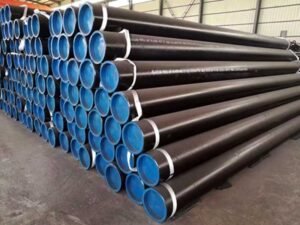
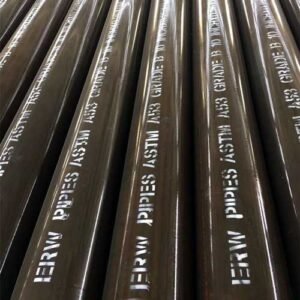

Seamless steel pipe manufacturing process is divided into hot-rolled and cold seamless pipe.
1. Production process of hot-rolled seamless steel pipe:
tube billet → heating → perforation → three-roller/cross-rolling & continuous rolling → de-pipe → sizing → cooling → straightening → hydraulic test → marking → seamless steel pipe with leverage effect detected.
2. Production process of cold drawn seamless steel tubes:
tube blank → heating → perforation → heading → annealing → pickling → oiling → multiple cold drawing → blank tube → heat treatment → straightening → hydraulic test → marking → storage.
| Seamless and ERW | Grade A | Grade B |
|---|---|---|
| Tensile Strength, min, psi | 48,000 | 60,000 |
| Yield Strength | 30,000 | 35,000 |
| Seamless and ERW | C max % | Mn max % | P max % | S max % |
|---|---|---|---|---|
| Grade A | 0.25 | 0.95 | 0.05 | 0.045 |
| Grade B | 0.30 | 1.20 | 0.05 | 0.045 |
Achieving the optimal balance between reliability and economy in industrial infrastructure is the perpetual goal of carbon steel pipe application. JSFITTINGS ensures that every pipe meets dimensional accuracy and mechanical properties and delivers durable and stable performance in real-world conditions through a deep understanding of materials science and strict control over manufacturing processes.
We are more than a pipe supplier; we are your technical project partner. To obtain the optimal product selection advice and a highly competitive quote tailored to your specific application conditions (e.g., pressure rating, ambient temperature, corrosive media), please contact our technical sales team today.
When you choose to contact us, you will love our service
No matter you have rich experience of importing or new in this industry, our team will try the best to make your purchase of steel pipes fast and efficient.
All staff are7x 24 hours online and all your inquiries will be replied within 2 hours.
common size of steel pipes are in stock more than 800 tons, CIF orders will book stand-on vessel first.
Test report, certificates, CO and all customs clearance documents will be replied in time.

In the realm of deep foundation engineering, the choice of piling material can determine the longevity and safety of an entire project. ASTM A252 Grade

With 40 years of manufacturing expertise, JSFITTINGS explains the key differences in manufacturing, pressure ratings, and applications of LSAW, SSAW, and ERW pipes to help you choose right.
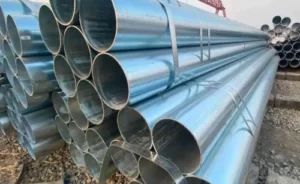
Galvanized steel pipes are commonly used in industrial systems, water supply systems, fencing, scaffolding, structural frameworks, HVAC, and construction, offering a durable, cost-effective solution where corrosion is a concern.
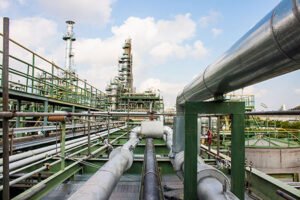
By understanding the manufacturing process, standards, and applications of ERW steel pipes, you can save your project from high costs without compromising on quality.
We will contact you within 2 hours, please pay attention to the email with the suffix “@jsfittings.com” or “@chinajsgj.com”.

Need help? Our team is just a message away